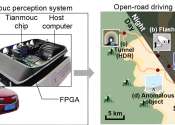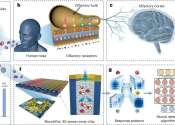Cutting-edge vision chip brings human eye-like perception to machines
With the rapid advancement of artificial intelligence, unmanned systems such as autonomous driving and embodied intelligence are continuously being promoted and applied in real-world scenarios, leading to a new wave of technological ...
Jun 5, 2024
0
52









